The Baseline - Investigating Five of Tennis's Biggest Talking Points
Part 4 - Great Britain's Struggle to Produce Top Players
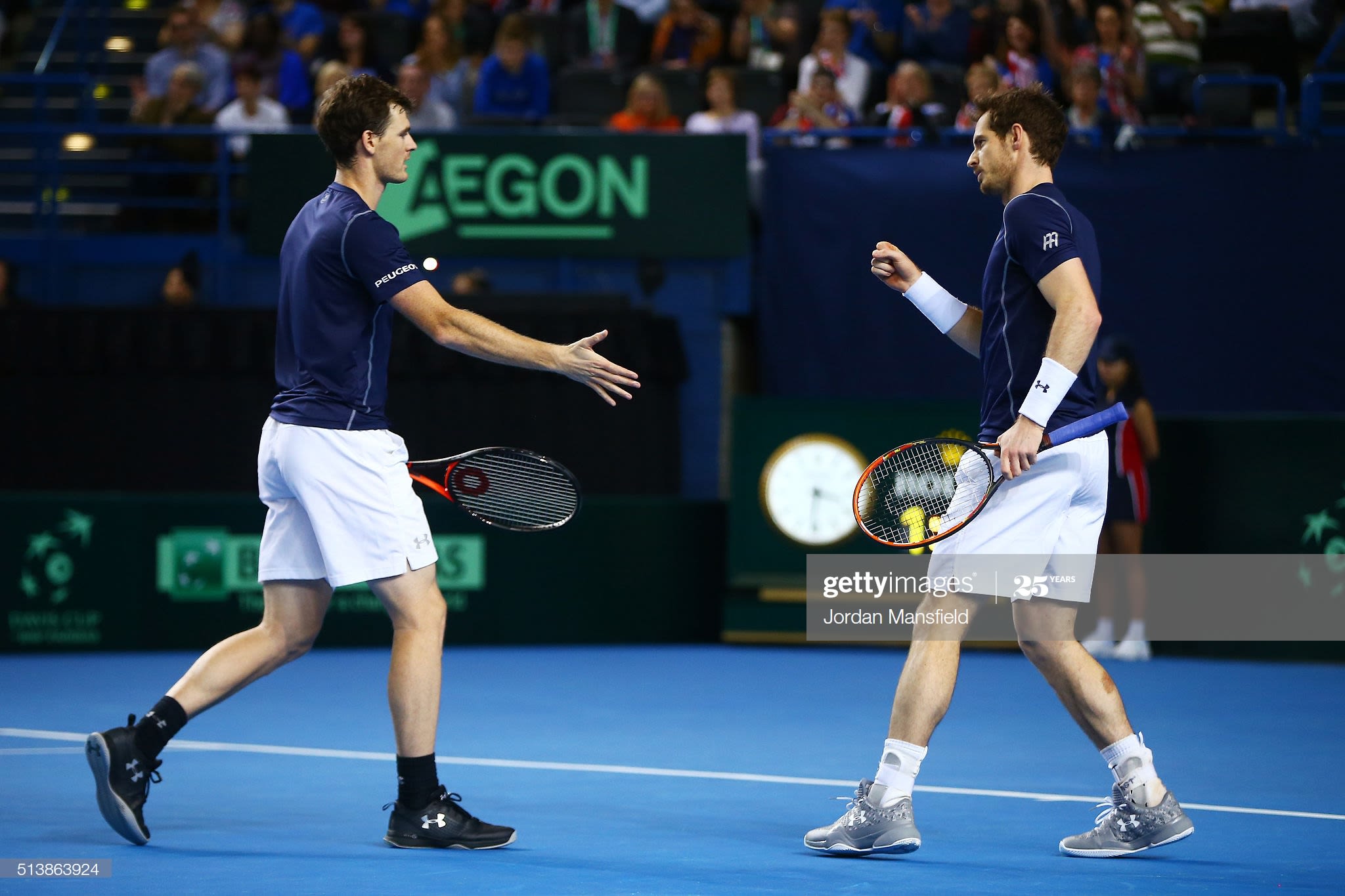
Part Four of The Baseline investigates the difficulty Great Britain has in consistently producing top tennis players, in comparison to other tennis-playing nations.
Why does Great Britain struggle to produce elite tennis players? And what needs to be done to improve the situation?
“It’s the small number of top 200 players - for a country which hosts the most famous tournament of them all - which has been a persistent problem,” explains Russell Fuller, the BBC’s tennis correspondent.
Despite the success of players such as Andy and Jamie Murray, Tim Henman, Greg Rusedski and Johanna Konta - and the incredible 2015 Davis Cup triumph - Great Britain has long struggled to produce a depth of talent in the men’s or women’s game.
There are a range of factors seen as being behind the problem, raising questions as to what needs to change.
Currently, there are five men and four women from Great Britain ranked in the top 200 of the respective ATP and WTA singles rankings. There are 14 nations with a higher combined total of top 200 male and female singles players.
Rankings as of 16/3/20. (Source: atptour.com, wtatennis.com)
Since 1985, there have only been four years in which 10 or more British players (men and women combined) were ranked in the top 200 of the year-end singles rankings. The last year Great Britain ended with 10 players in the top 100 was 1978.
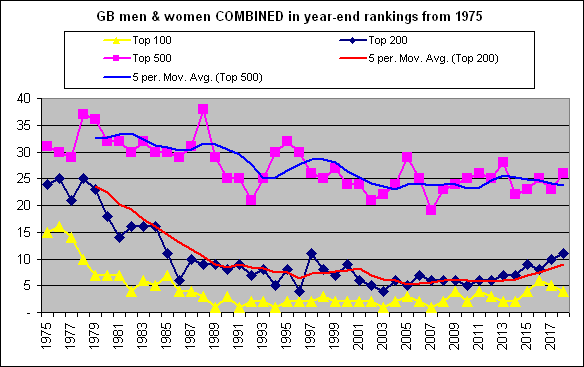
This graph details the number of British players ranked in the top 100, 200, and 500 of the year-end singles rankings from 1975 to 2018. (Credit: britishtennis.net)
This graph details the number of British players ranked in the top 100, 200, and 500 of the year-end singles rankings from 1975 to 2018. (Credit: britishtennis.net)
Fuller outlines reasons as to why British tennis has this issue: “Talent identification has been rather hit and miss, and not helped by regular changes in direction. It’s a tricky problem to solve.
“Tennis has never been in the UK’s DNA in the way football and some other team sports have. Tennis has never broken into mainstream education, and it remains phenomenally expensive if parents take the decision to try and help their child pursue a professional career.”
He adds on specific cases from this list: “The club network in France has long been the envy of other tennis-playing nations - and it seems likely there is a correlation between the number of clubs and their competition system, and the high number of players who reach the elite level.
“And then, in contrast, there is the performance of countries like Russia and Serbia. Many of their successful players had far from affluent childhoods. Novak Djokovic, Ana Ivanovic and Jelena Jankovic grew up during the Balkans Conflict, and many saw professional sport as a way of significantly improving their life chances.”
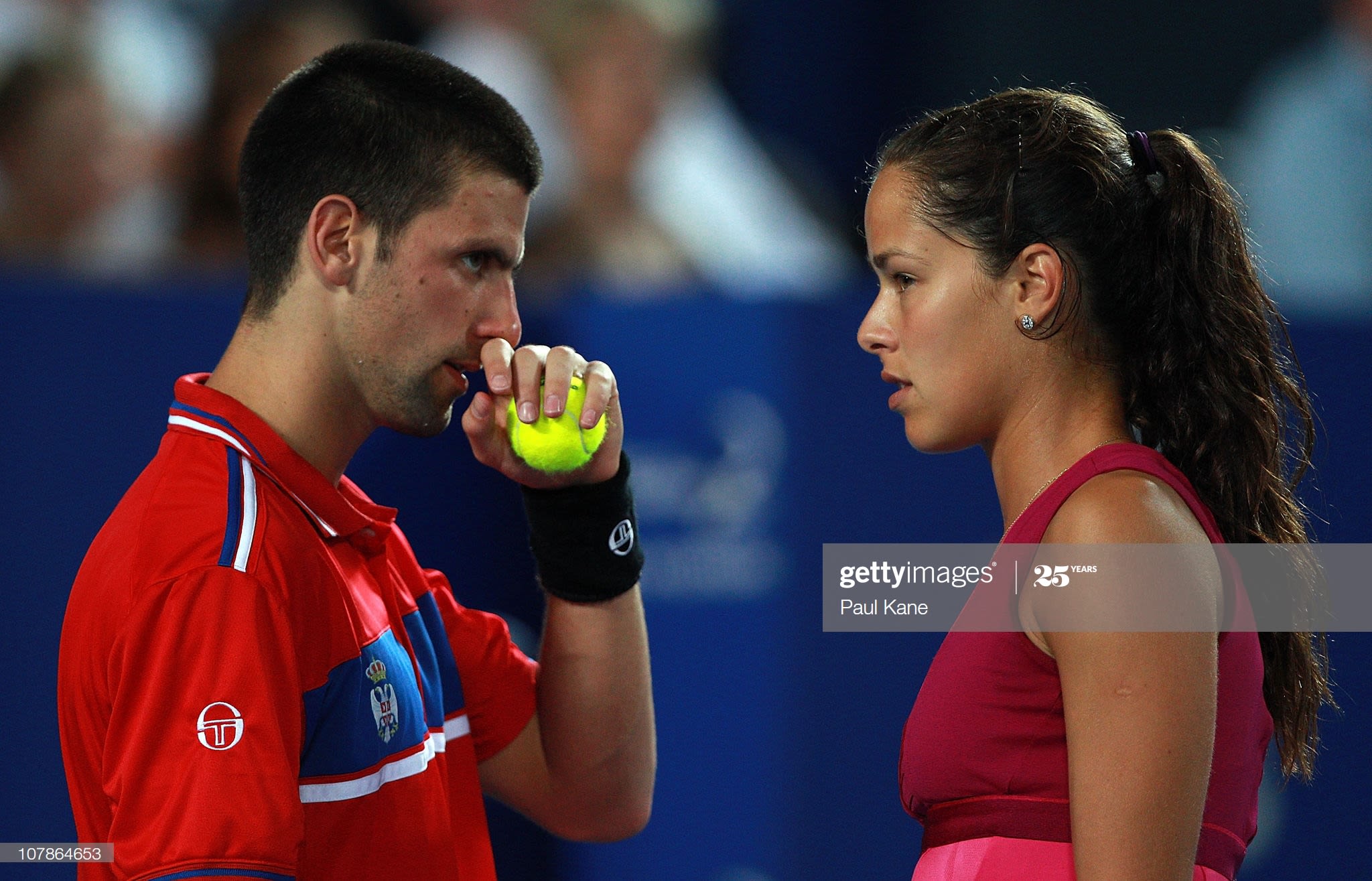
Novak Djokovic and Ana Ivanovic talk during Serbia's mixed doubles match against Australia at the 2011 Hopman Cup. Djokovic, Ivanovic and Jelena Jankovic spearheaded a golden generation for Serbian tennis. (Photo by Paul Kane/Getty Images)
Novak Djokovic and Ana Ivanovic talk during Serbia's mixed doubles match against Australia at the 2011 Hopman Cup. Djokovic, Ivanovic and Jelena Jankovic spearheaded a golden generation for Serbian tennis. (Photo by Paul Kane/Getty Images)
Danny Sapsford, a former British professional player and LTA National Performance Coach, says: “The main reason is just basic maths.
“If you think of your Performance model being the shape of a pyramid, with the total number of players as your base, then it makes sense that the top of the pyramid is higher if your base is larger. By comparison, Great Britain have far fewer players than nations such as France, Spain and Italy.
“There are issues with the standard of some of the coaching in Great Britain too. Especially at the most critical times, for example: 6-12 years.”
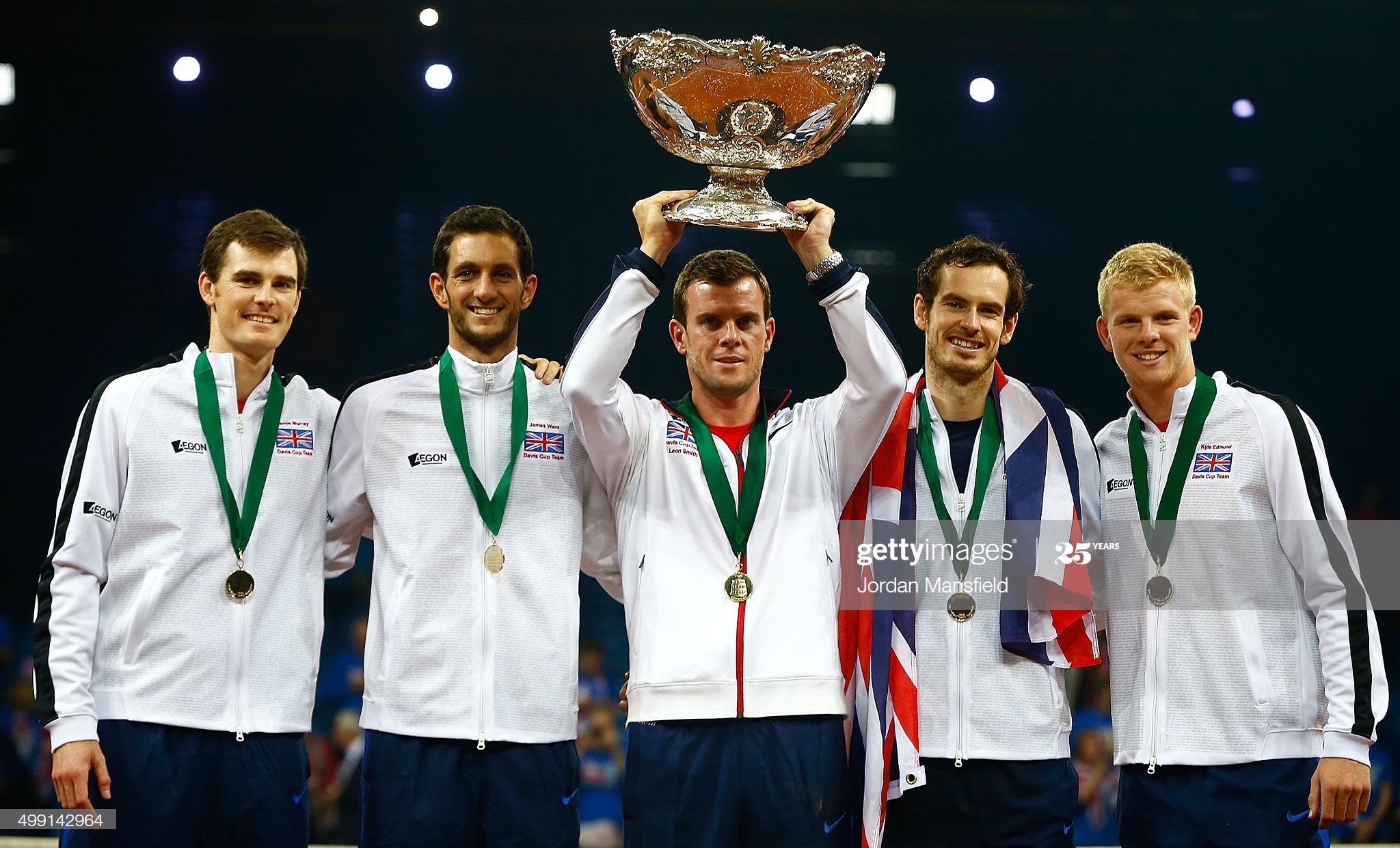
(L-R) Britain's Jamie Murray, James Ward, captain Leon Smith, Andy Murray and Kyle Edmund celebrate winning the 2015 Davis Cup in Ghent, Belgium - their first triumph in the event since 1936. (Photo by Jordan Mansfield/Getty Images)
(L-R) Britain's Jamie Murray, James Ward, captain Leon Smith, Andy Murray and Kyle Edmund celebrate winning the 2015 Davis Cup in Ghent, Belgium - their first triumph in the event since 1936. (Photo by Jordan Mansfield/Getty Images)
Richard Buscombe, Senior Lecturer in Sport and Exercise Psychology at the University of East London and qualified Sports Coach, says on participation: “If you look at the Active People Survey, engagement in racquet sports is decreasing.
“The lack of black and minority ethnic individuals playing tennis is a big problem - there’s a large percentage of the population that essentially don’t play.
“In terms of socio-economic status, tennis is still largely seen as a white, middle and upper-class sport. From my experience, it is simply not accessible.”
An unnamed LTA Level 4 Performance Coach - who has coached top British juniors and worked with international juniors - believes British players are typically less hungry for success due to being given funding at a very young age, and because too much emphasis is placed on winning too early.
They break down the problem: “This creates a culture of expectation and often diverts attention away from the joy of playing and the desire to work hard and earn rewards. This is also seen at a high level with wild cards into Wimbledon.
“Mentally, we have many players who struggle to manage the roller coaster ride of playing a tennis match. This comes from having an expectation of success without the true desire to fight through adversity.
“Coaches often focus heavily on technique and as a nation we don't have a consistent ethos. Physically, we are less strong and fit, but massive improvements have been made on this.
“Environmentally, we are somewhat at a disadvantage because of the poor weather conditions - so the sport isn't available at a high level all year to everyone, and those that do have indoor facilities can get too comfortable playing in perfect conditions and struggle when faced with adverse playing situations.”
So, what needs to change to address the issue?
Fuller says: “You need to get more children playing the game. Grow the base, and the chances are the numbers will come through in greater depth.
“As a country we also need to do better in converting promising and successful juniors into top 100 players of the future. Dan Evans told me once how hard he had found it to break into the top 100, and said it would help if there were more British coaches who had reached that level during their playing career.”
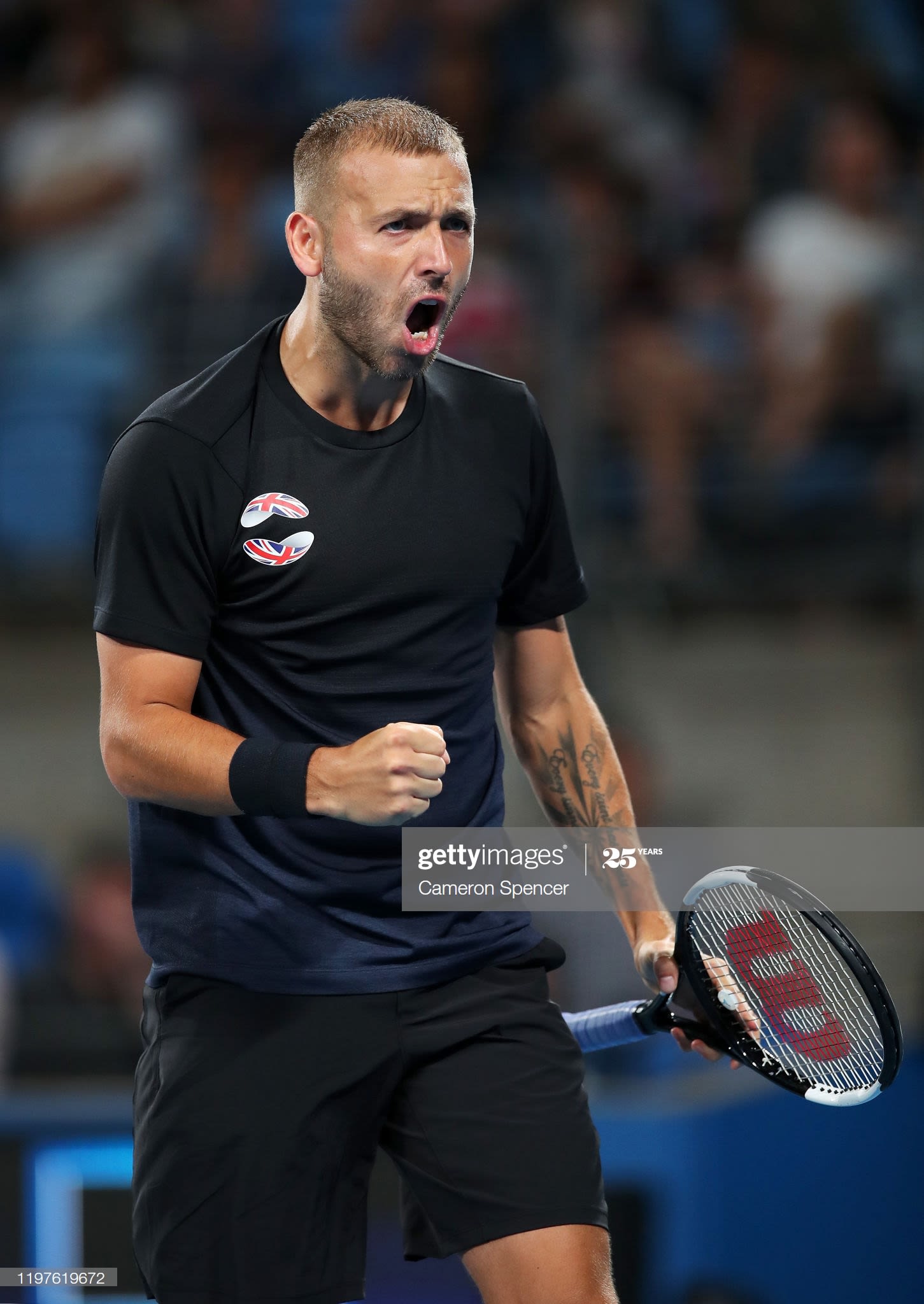
Great Britain's number one men's singles player Dan Evans is currently at a career-high ranking of 28, but it took the 29-year-old until 2016 to break into the top 100. (Photo by Cameron Spencer/Getty Images)
Great Britain's number one men's singles player Dan Evans is currently at a career-high ranking of 28, but it took the 29-year-old until 2016 to break into the top 100. (Photo by Cameron Spencer/Getty Images)
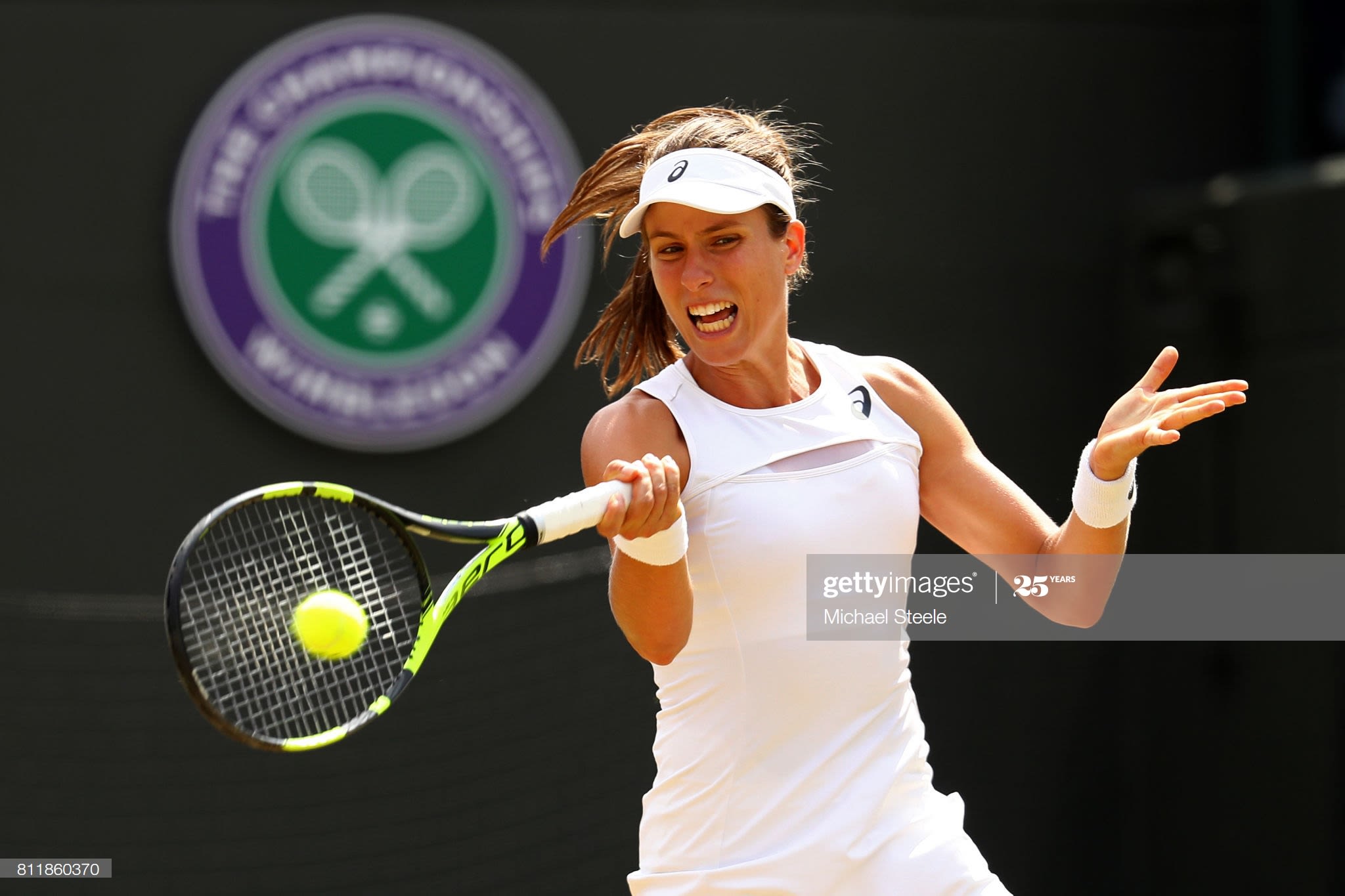
Britain's top-ranked women's player Johanna Konta - who has been as high as four in the world - has reached the semi-finals at three of the four Grand Slams. The previous British woman to reach a major semi-final was Jo Durie in 1983. (Photo by Michael Steele/Getty Images)
Britain's top-ranked women's player Johanna Konta - who has been as high as four in the world - has reached the semi-finals at three of the four Grand Slams. The previous British woman to reach a major semi-final was Jo Durie in 1983. (Photo by Michael Steele/Getty Images)
Buscombe suggests how participation could be increased: “When someone has done their Level 3 (LTA Coach Qualification), they can go to a tennis club and charge £35 an hour for a lesson. It prices a large percentage of the population out of the market.
“Most sports at grassroots level are organised and delivered by volunteers. So, I think tennis really needs to work hard on developing a volunteer work force.”
The LTA Coach focuses on funding: “Players often give up playing tennis when they lose their funding because of the built-up expectation to have things given to them.
“In my opinion, funding should be given to older players once they have shown a strong commitment to the game and need the money to travel to tournaments abroad, and when the cost of competing week in week out becomes extremely expensive.”
Here are the other three parts of the series:
